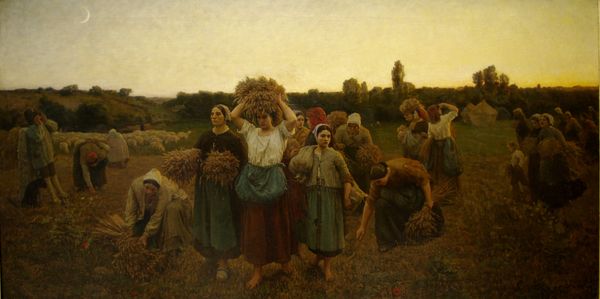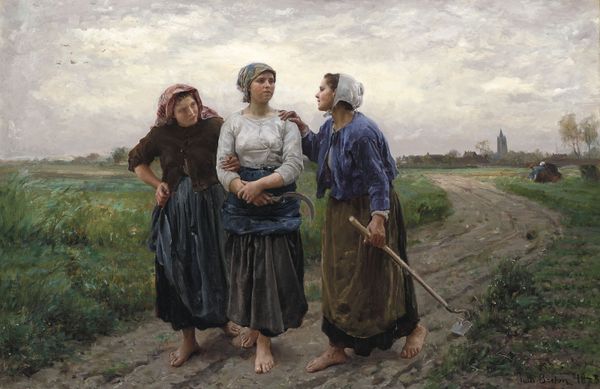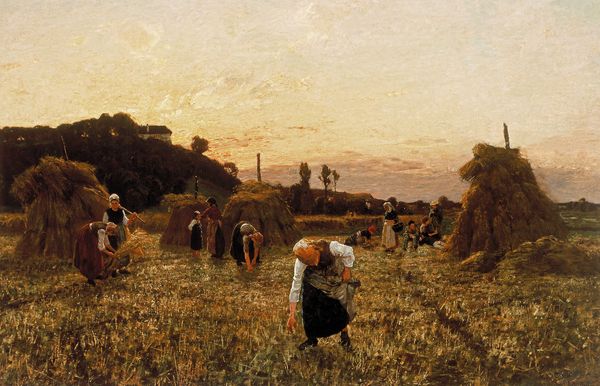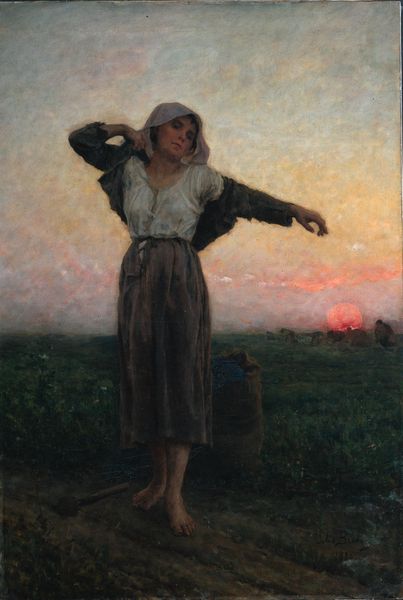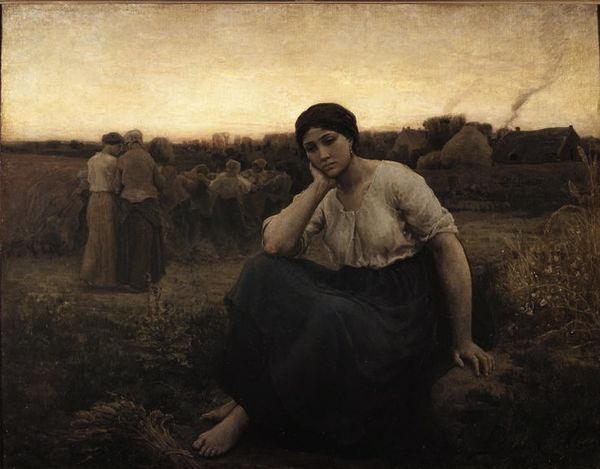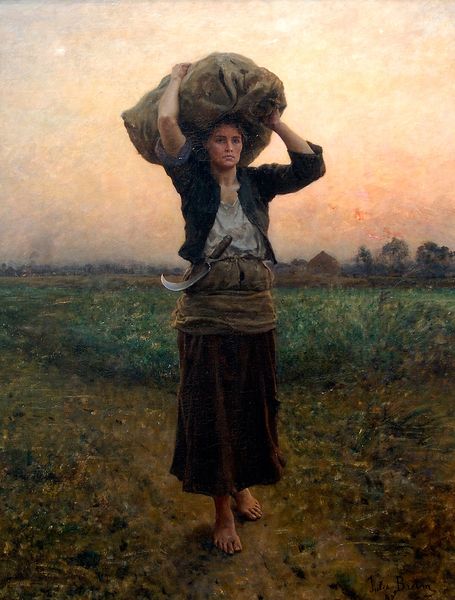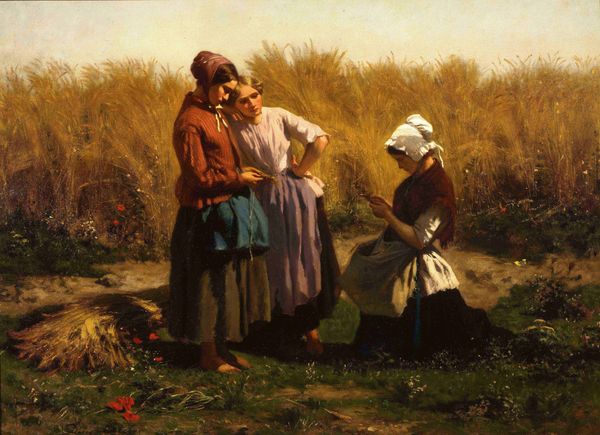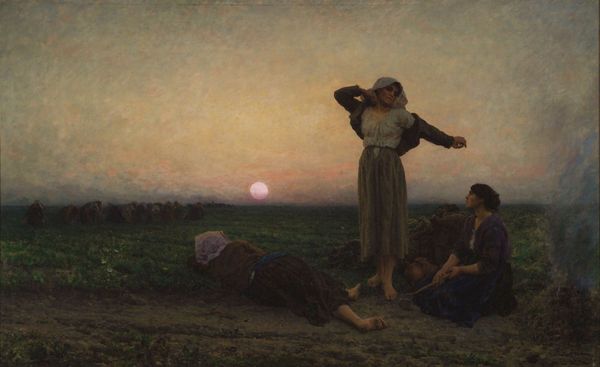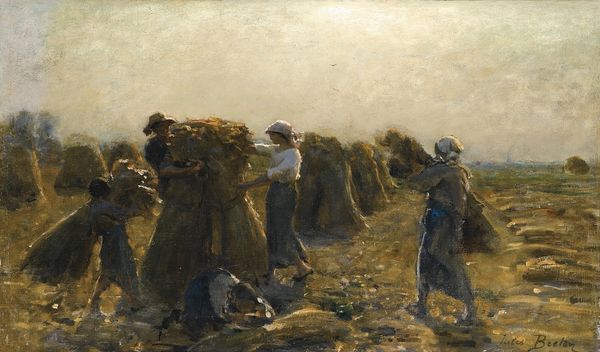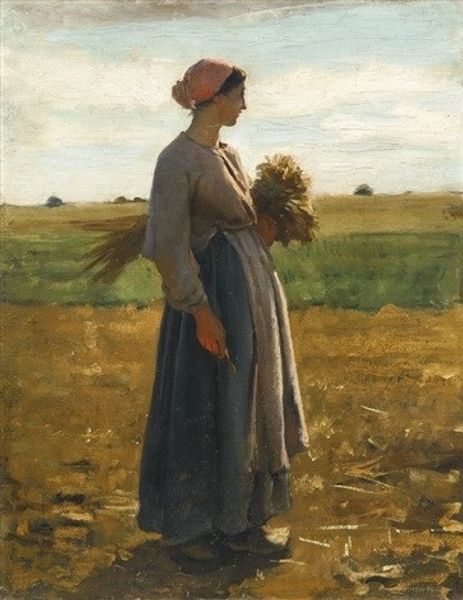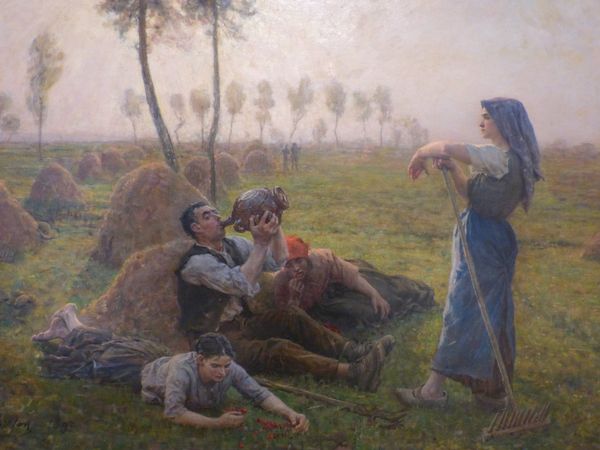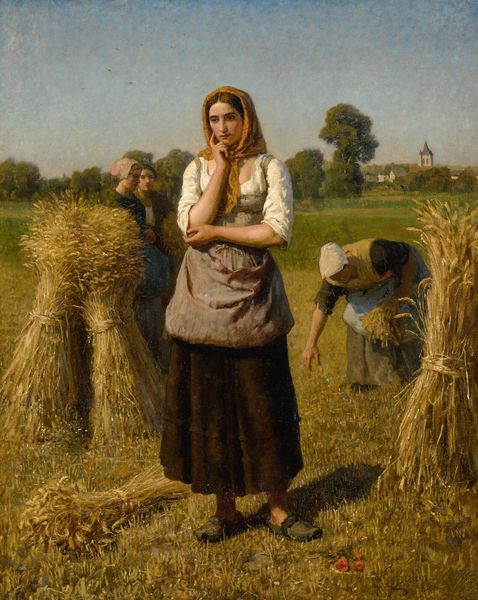
Copyright: Public domain
Curator: Let’s turn our attention to Jules Breton's 1859 oil on canvas study, "The Recall of the Gleaners." The amber light immediately gives me a feeling of dusk and retreat. Editor: Absolutely. There's a weighty atmosphere about it, almost tactile. You can practically feel the rough texture of the field and the heaviness of the grain these women carry. Note the earthy palette – browns, ochres, creams – it emphasizes the close connection to the land. Curator: The scene depicts a group of women, gleaners to be exact, returning from the fields at sunset, bearing their harvest. It reminds us of ancient harvest processions. Their heads carry not just physical weight but echo timeless themes. Editor: Considering Breton was deeply influenced by Courbet and Millet, it is worth pondering how the depiction and conditions of the labor are represented. The worn clothes, bare feet of some, speak volumes. This is a physically demanding, repetitive work that relies on very particular material conditions: landscape, weather, tools, and hands to labor, where gender is often tied to very specific demands and expectations. Curator: The composition is interesting; notice the light isn't diffused evenly. It falls centrally, illuminating the faces and figures of the women in the foreground, almost haloing the sheaves. They aren't individualized, really. They represent an archetype of rural womanhood, perseverance, perhaps even resilience. It ties them back to those primal symbols of the earth, of abundance, of female strength that course throughout our shared history. Editor: Yet I can't help but think of the social hierarchy present here, the women are bound to gleaning: gathering leftover crops after the harvest. Who owns the fields? Who dictates the labor and for what pay? These are questions rooted in materiality that affect lived experiences. The way Breton uses the oil paint– thick in some areas, more transparent in others– creates a sense of depth and dimensionality but also perhaps hides the dirt from the labour on these figures, which I would wager it isn't just brown, ochre, and cream. Curator: It's a compelling point. Perhaps it idealizes to a degree but also elevates their work to something almost sacred. Editor: An important consideration. Seeing this through Breton's painting we can reflect on both a very gendered perspective about work as a type of ideal, or we could consider this depiction to call for material recognition and the value for women's contribution to agricultural output. Curator: Food for thought indeed! A beautiful, complex picture that shows us so much about ourselves, even now. Editor: An encounter that really reveals its layers when considering Breton's methods of painting.
Comments
No comments
Be the first to comment and join the conversation on the ultimate creative platform.
